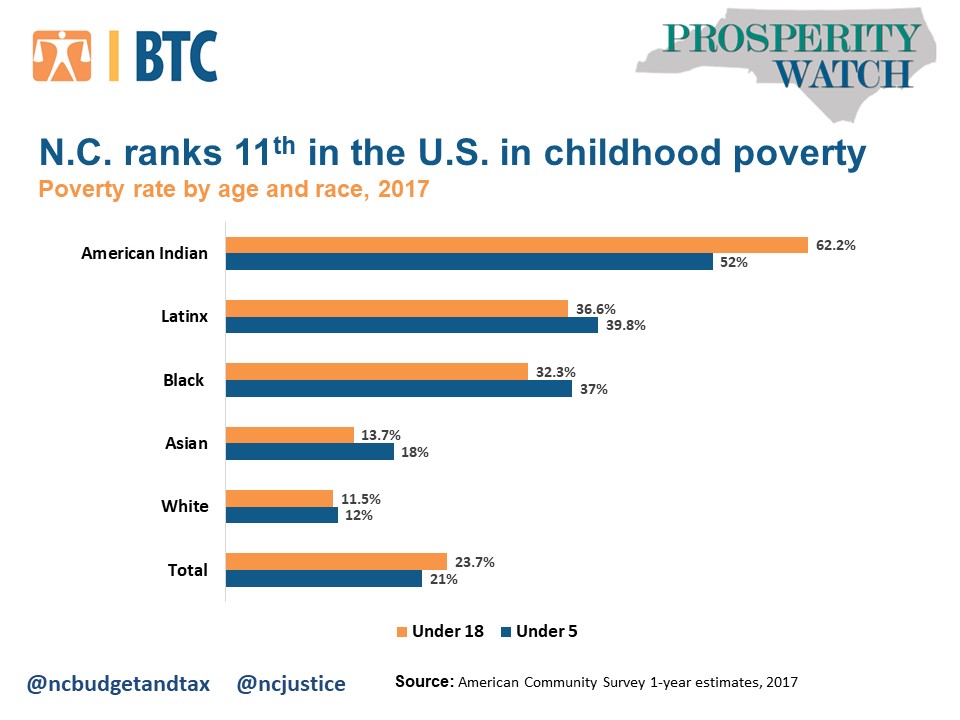The data also highlights that not all children experience poverty equally. In 2017, 23.7 percent of children under the age of five lived in homes with incomes below the federal poverty level ($24,600 for a family of four). When broken down by race, the true disparities of what children are experiencing comes to light. Children of color experience poverty at a rate of 32.8 percent, compared to only 11.5 percent of white children. Native and Latinx children under the age of five experience poverty at 62.2 and 36.6 percent, respectively – higher than any other subgroup or demographic.
In addition to racial disparities, geography also played a large role in which children were in poverty. Children in rural counties and in the Eastern part of the state were far more likely to live in struggling households.
Rising costs of child care and health care, few rights for workers with children, and the erosion of social supports are all contributors to North Carolina’s elevated levels of childhood poverty. If North Carolina wants to build a strong economy for tomorrow, it must start by investing in the well-being of its children.
 Justice Circle
Justice Circle 